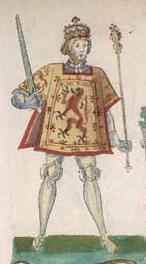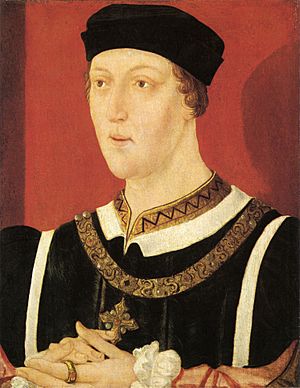Treaty of York (1464) facts for kids

The Treaty of York (1464) was an important agreement made between England and Scotland. It happened on June 1, 1464, in the city of York. The main goal of this treaty was to create a long period of peace, planned to last for 15 years. Before this, Scotland had been helping the House of Lancaster, one of the sides that lost in England's big civil war, known as the Wars of the Roses.
Why the Treaty Was Needed

At the time of these peace talks, Scotland's main leader for foreign affairs was Bishop James Kennedy. Scotland had been helping the Lancastrian side in England's civil war. The Lancastrian king, Henry VI of England, his wife Margaret of Anjou, and their son Prince Edward had even found safety in Scotland after a major battle in 1461.
However, Scotland realized they couldn't get much help from their old ally, Louis XI of France. This meant Scotland had to stop supporting the Lancastrians. Instead, they had to make peace with the winning side in England, the House of York, led by King Edward IV of England.
There had been some fighting between Scotland and England. For example, a Scottish attack on Norham Castle in 1463 failed. After this, parts of the Scottish border were attacked by powerful English nobles like the Earl of Warwick. These events made it clear that peace was necessary for Scotland.
Who Negotiated the Treaty
Even though he was very important, Bishop Kennedy did not attend the actual negotiations. Scotland sent several important people to represent them. These included Andrew, Bishop of Glasgow, and other key figures like the Earl of Argyll and Lord Boyd.
England also sent their top representatives. King Edward IV's team included his Chancellor, George, Bishop of Exeter, and the powerful Earl of Warwick. Other important nobles and officials were also part of the English group.
The treaty was officially finished in Newcastle-upon-Tyne. It was agreed to extend the peace even further, making it a 40-year truce. This longer peace was meant to last until October 31, 1519. King Edward IV officially approved this longer truce on January 1, 1466.
The treaty also included rules about trade and what should happen if a ship was wrecked. These rules were similar to older agreements, but they added that if a ship was wrecked, the ship and its goods would still belong to any survivors. Two specific areas, the English island of Lundy and the Scottish lands of Lorne, were not included in the treaty's terms.
When the Peace Ended
The long peace created by the Treaty of York did not last the full 40 years. It was broken in 1480 by both James III of Scotland and Edward IV of England.
In 1480, King Edward IV of England began preparing a large army to invade Scotland. He also ordered warships to be ready. In 1482, James III's younger brother, Alexander Stewart, Duke of Albany, made a deal with Edward IV. In this deal, known as the Treaty of Fotheringhay, Alexander declared himself King of Scotland and promised to give the town of Berwick upon Tweed and other places to England. He also agreed to break Scotland's old alliance with France.
As a result, Berwick town surrendered to the English army in July 1482, and its castle was taken in August. This marked the end of the peace that the Treaty of York had tried to establish.

